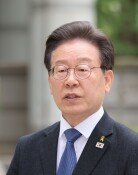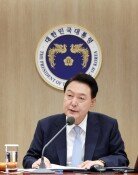A new paradigm for low birth rate
A new paradigm for low birth rate
Posted December. 27, 2017 07:27,
Updated December. 27, 2017 07:43
“Now is the last golden time to solve the serious population crisis,” President Moon Jae-in said at the Presidential Committee on Ageing Society and Population Policy on Tuesday. He has emphasized that it is important for women to be free from oppression arising out of marriage and childcare. In this backdrop, President Moon has decided to reinforce measures to balance work and life by strengthening “equal childcare,” where father participates in childcare with mother, as well as social-care functions. The government’s plans to tackle low birth appears to move away from number based policies that focused on improving birth rate towards supporting the lives of women, who have been solely responsible for childcare.
In 2006, the government started to recognize the problem of low birth and ageing, and came up with countermeasures. Nevertheless, 11 years have passed by since but South Korea’s birth rate remains at 219th place among 225 countries around the world. Even though the government has spent 200 trillion won of budget into the basic plan for low birth and ageing society on three different occasions, it fails to reap fruitful results due to department-store-like policies, not least lack of willingness to actually implement the plan. The Committee on Ageing Society and Population Policy’s recognition of people considering the government’s policies as “none of my business” implies that the government belatedly realized that policies up until now were not only costly but estranged from the reality.
The total birthrate, which is the average number of children a Korean woman bears in her lifetime, was already among lowest in the world and this could decrease to 1.06 to 1.07. In a situation where measures to tackle low birth by providing financial support to give birth to and foster a child is not working at all, President Moon Jae-in has highlighted the need for a transfer in paradigm by underscoring the lives of women.
This is not a new idea. The core of the former administration’s policy tried to make work and family compatible by promoting parental leave, expanding childcare service, and solving blind spots in parental leave policy. However, the government’s policy and difficulties in work are two separate realities in a corporate culture where a working woman needs to walk on eggshells to take a maternal leave. If public servants, who are not aware of this reality, continuous to come up with similar policies in different packages, it would lead to yet another mistake that consumes time and wastes finance.
In order to prevent “sole childcare” by women, companies also need to make efforts to change the current culture by standing on the side of their daughters and daughters in law. On the other hand, the government should come up with a policy that takes a step further from supporting childcare and take a viewpoint that “babies shall be fostered by the government.” After witnessing a shocking total birth rate of 1.57 in 1989, Japan has poured out policies that encourage the coexistence of work and childcare such as the Angel Plan, the New Angel Plan and Plus One Plan for Low birth, but has not made any achievement yet. Now, Japan is challenging itself to escape from low birth with a “Full Participation of 100 million Plan,” which intends to maintain 100 million working age population in Japan. With the way things are going, South Korea needs to come up with a “Full Participation of 40 million Plan” to raise the number of working age population, which remains at 37 million range.
Headline News
- Israel prepares for retaliation against Iran
- Samsung reclaims top spot, surpassing Apple in smartphone market
- 77% of Koreans in 20s and 30s are 'Kangaroo Tribe' due to job crisis
- KBO referees embroiled in controversy over ABS decision concealment
- Inflation, oil price surge put double shock on global economy







